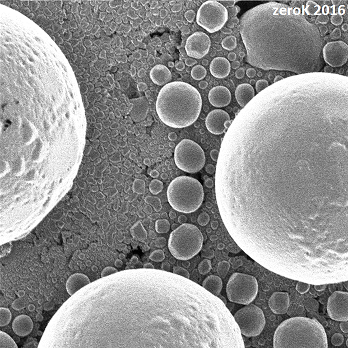Scientific Research and Education
Advanced Ion Sources
Since 2009 I have worked to develop new ion sources that will improve the performance of focused ion beam Instruments. These sources work by first laser-cooling and then photoionizing an atomic vapor. Using these techniques ion sources of chromium, lithium, and cesium have been created. The latest cesium source is very high-performing and is now being developed as one of the first commercial applications of laser-cooling.
Since 2013 this work has been done with my colleagues at zeroK NanoTech. From 2009-2012 this research was done at NIST as part of my post-doctoral fellowship with the group of Jabez McClelland.

This image was taken using the zeroK LoTIS Cs+ FIB prototype.
Laser Cooling
The common thread in all of my research is the use of lasers to bring an atoms from room temperature or above down to a as low as a few millionths of a degree of absolute zero. Laser-cooling was critical to the creation of the ion sources described above, and can be applied to reduce the temperature of both neutral atoms and ions.
Ion and Atom Trapping
Longer term confinement is usually needed in order to achieve and make use of the ultra-cold temperatures enabled by the laser cooling. In the context of this section, long-term means timescales longer than those required for a uncooled particle to pass through the lasers.
Publications
- Google Scholar Page
- PhD Thesis
Education
I hold a PhD from Georgia Institute of Technology and a B.S in physics and computer science from Carnegie-Mellon University.